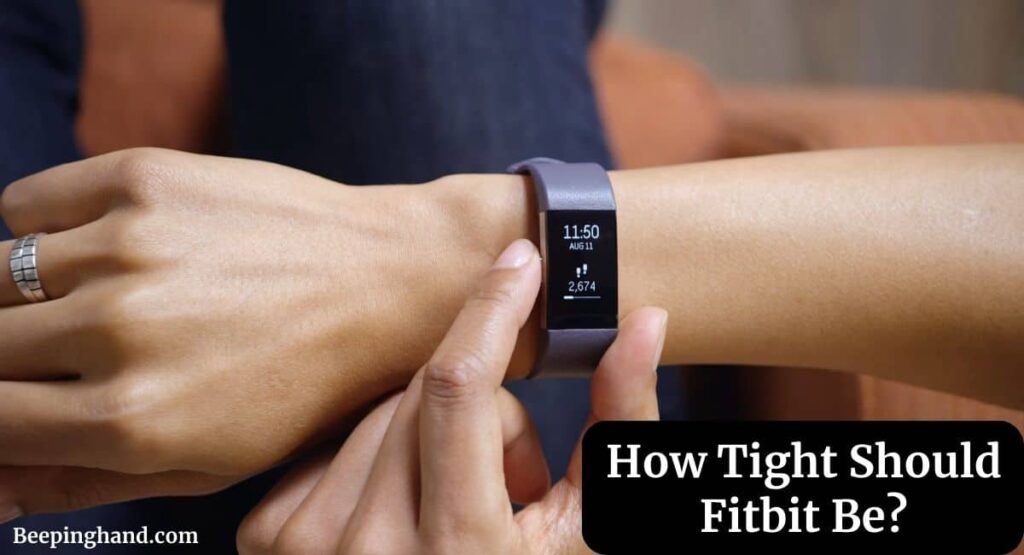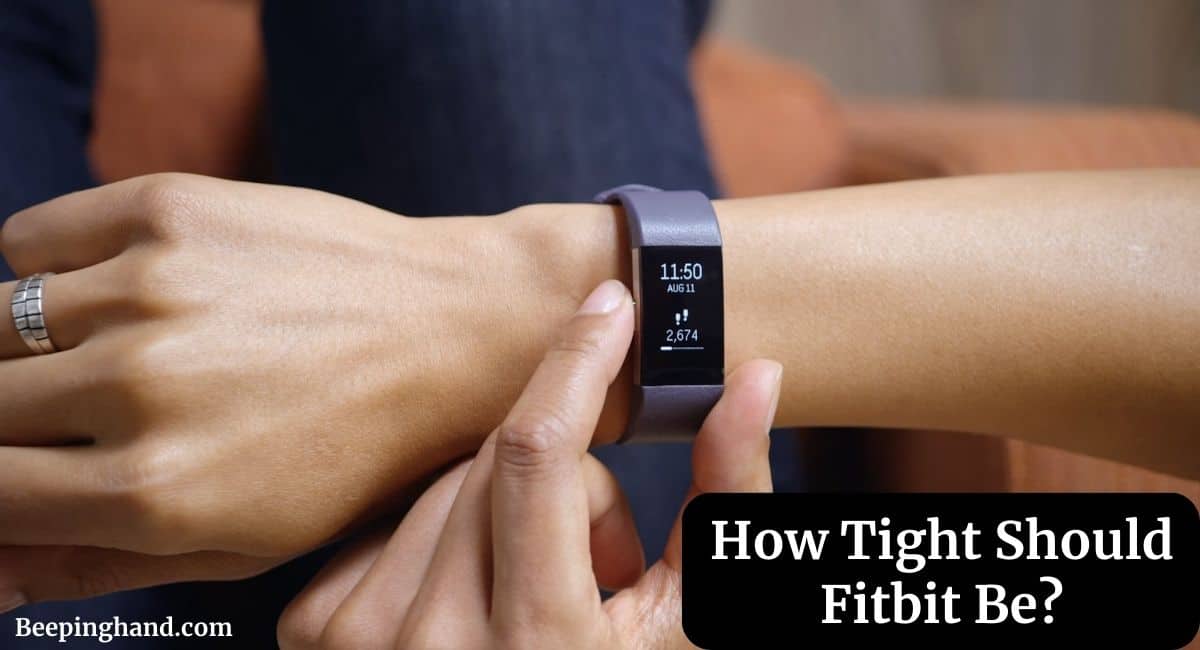Fitbit has emerged as a frontrunner. These sleek, feature-rich devices are designed to monitor your health, activity, and help you stay on top of your fitness goals. However, one crucial aspect that’s often overlooked is how to properly wear a Fitbit.
Specifically, how tight it should be strapped to your wrist. Here, we’ll explore How Tight Should Fitbit Be and provide you with all the information you need to ensure you’re getting the most accurate data and optimal comfort.
How Tight Should Fitbit Be?

If you are wondering to know that how should you wear your Fitbit Watch then you have come to the right place. Here, we’ve shared detailed information.
Why Does Fitbit Fit Matter?
Fitbit devices are equipped with sensors that track various metrics such as heart rate, steps taken, and sleep patterns. To ensure these sensors work correctly, your Fitbit needs to maintain consistent contact with your skin.
Here are a few reasons why the right fit is crucial –
- Accuracy: A snug fit ensures that the sensors on the underside of your Fitbit are in close contact with your skin. This proximity is essential for accurate readings, especially for metrics like heart rate and sleep patterns.
- Comfort: While accuracy is important, so is comfort. Wearing your Fitbit too tight can lead to discomfort, skin irritation, and even restrict blood flow in extreme cases. On the other hand, if it’s too loose, it might move around, potentially affecting the data it records.
- Safety: An excessively tight Fitbit can cause skin-related issues like rashes or discomfort. It’s essential to strike a balance between a snug fit and comfort to prevent any adverse effects.
How Tight Should Your Fitbit Be?
The ideal fit for your Fitbit can vary slightly depending on the specific model you own and personal preferences. However, there are some general guidelines to follow –
1. Snug, Not Tight
Your Fitbit should be snug against your wrist, but not so tight that it leaves marks or feels uncomfortable. A good rule of thumb is to ensure that you can fit a finger between the device and your skin. This allows for proper sensor contact without constricting your wrist.
2. Position Matters
Fitbit recommends wearing their devices about one finger’s width above your wrist bone. This position typically ensures the sensors remain in contact with your skin, providing accurate data.
3. Avoid Slippage
Your Fitbit should not move around your wrist during regular activities. If it shifts or rotates, it might not provide accurate readings. Make sure the band is secure enough to prevent slippage.
4. Skin Care
To maintain both accuracy and skin health, it’s essential to clean your Fitbit regularly. Sweat, dirt, and residue can accumulate beneath the device, affecting sensor performance. Use a gentle, non-abrasive cloth to wipe it clean.
5. Adjust for Exercise
During intense workouts, you may want to adjust the tightness slightly. Activities like weightlifting might benefit from a slightly looser fit to allow for better blood flow while running or cycling may require a snugger fit to prevent movement.
6. Check for Tightness Regularly
As your wrist size can change due to factors like temperature, hydration, or weight fluctuations, it’s a good practice to check the tightness of your Fitbit regularly. Make adjustments as needed to maintain the ideal fit.
Is it Safe to Wear a Fitbit All Day?
The short answer is yes, it is generally safe to wear a Fitbit all day. Fitbit devices are designed with safety and comfort in mind. They are constructed using materials that are skin-friendly and hypoallergenic. The majority of users experience no issues wearing their Fitbit around the clock.
Wrapping Up
This article is all about How Tight Should Fitbit Be. The right fit for your Fitbit is more than just a matter of comfort. It directly impacts the accuracy of the data it provides. By following these guidelines and finding the perfect balance between snugness and comfort, you can ensure that your Fitbit becomes a valuable tool in your journey toward a healthier, more active lifestyle.
I hope this article was helpful to you and if you still find any queries then you may ask in the comment box. For more information visit the Help and Support Page.
FAQ’s How Tight Should Fitbit Be
How tight should I wear my Fitbit for accurate heart rate monitoring?
To ensure accurate heart rate monitoring, your Fitbit should be worn snugly but not excessively tight. You should be able to fit a finger between the device and your wrist. This allows for proper sensor contact with your skin.
Can wearing a Fitbit too tight cause discomfort or skin irritation?
Yes, wearing a Fitbit too tightly can lead to discomfort and even skin irritation. It’s essential to find the right balance between a snug fit for accurate readings and comfort to avoid skin-related issues.
Should I adjust the tightness of my Fitbit during exercise?
Yes, it’s a good idea to make slight adjustments during exercise. For activities that require more wrist movement, like weightlifting, a slightly looser fit may be more comfortable. However, for activities like running or cycling, a snug fit is essential to prevent the device from moving around.
Can wearing a Fitbit too tight affect blood circulation?
Wearing a Fitbit excessively tight can potentially affect blood circulation, especially if the band is too constricting. It’s important to strike a balance between a snug fit for accurate readings and allowing proper blood flow.
Are there any signs that my Fitbit is too tight or too loose?
Signs that your Fitbit may be too tight include discomfort, skin redness, or indentations on your skin. If it’s too loose, you may notice the device moving around excessively during daily activities.
